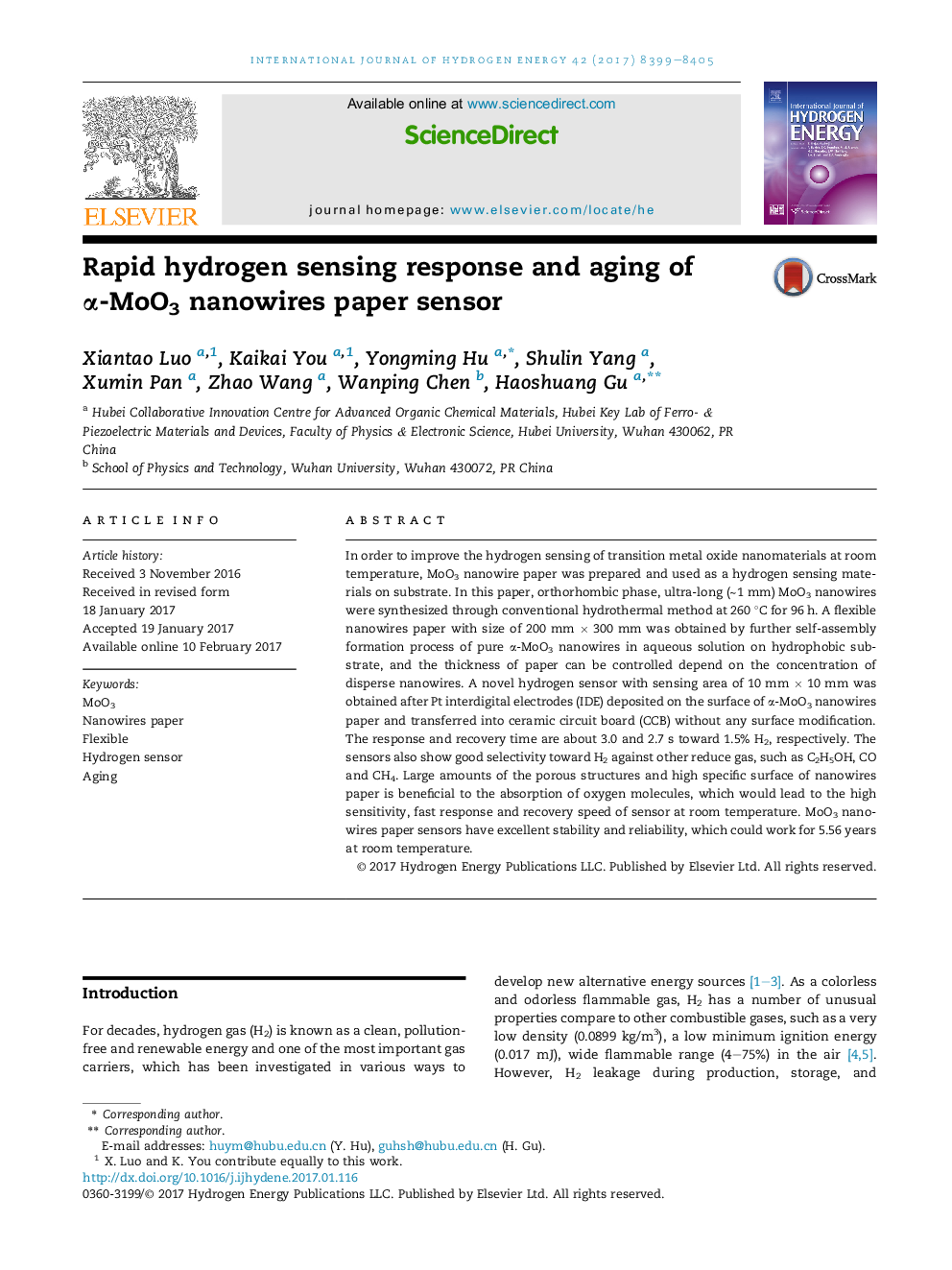| Article ID | Journal | Published Year | Pages | File Type |
|---|---|---|---|---|
| 5148325 | International Journal of Hydrogen Energy | 2017 | 7 Pages |
Abstract
In order to improve the hydrogen sensing of transition metal oxide nanomaterials at room temperature, MoO3 nanowire paper was prepared and used as a hydrogen sensing materials on substrate. In this paper, orthorhombic phase, ultra-long (â¼1 mm) MoO3 nanowires were synthesized through conventional hydrothermal method at 260 °C for 96 h. A flexible nanowires paper with size of 200 mm Ã 300 mm was obtained by further self-assembly formation process of pure α-MoO3 nanowires in aqueous solution on hydrophobic substrate, and the thickness of paper can be controlled depend on the concentration of disperse nanowires. A novel hydrogen sensor with sensing area of 10 mm Ã 10 mm was obtained after Pt interdigital electrodes (IDE) deposited on the surface of α-MoO3 nanowires paper and transferred into ceramic circuit board (CCB) without any surface modification. The response and recovery time are about 3.0 and 2.7 s toward 1.5% H2, respectively. The sensors also show good selectivity toward H2 against other reduce gas, such as C2H5OH, CO and CH4. Large amounts of the porous structures and high specific surface of nanowires paper is beneficial to the absorption of oxygen molecules, which would lead to the high sensitivity, fast response and recovery speed of sensor at room temperature. MoO3 nanowires paper sensors have excellent stability and reliability, which could work for 5.56 years at room temperature.
Keywords
Related Topics
Physical Sciences and Engineering
Chemistry
Electrochemistry
Authors
Xiantao Luo, Kaikai You, Yongming Hu, Shulin Yang, Xumin Pan, Zhao Wang, Wanping Chen, Haoshuang Gu,
